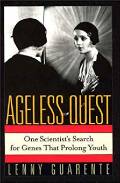Robert Brown names the Cell Nucleus and Proposes its Importance in Cell Formation
 Who:Robert Brown
Who:Robert BrownWhen:November 01, 1831
Why: Further the study of botany
Methods: By looking at cells of Asclepiads and orchids through a microscope
Institution: The British Museum
Where: London, England
Funding: The British Museum
Technology: Microscope
 |
| Robert Brown |
Robert Brown(1773-1858) was born in Montrose, Scotland and took an early interest in botany as a boy. Brown loved to collect plants, and his reputation soon proceeded him. At age 28, Brown accepted an invitation to sail to Australia, where he preceeded to collect over 500 plants in 3 weeks.1
Brown focused much of his energy on the process of fertilization in plants, and chose the cells of Asclepiads and orchids to further his study. In them Brown noticed pollen traveling in and out of ovals in their cells. He termed this oval the "the nucleus".1
Brown first expressed his observations in an 1831 speech, and published them in a paper two years later. His statements suggested the nucleus played a key role in fertilization and development of the embryo in plants. Thus, Brown not only named the nucleus, but created the possibility that it was at the center of cellular creation.
References
- Oliver, Francis W. Makers of British Botany. London: Cambridge University Press, 1913




